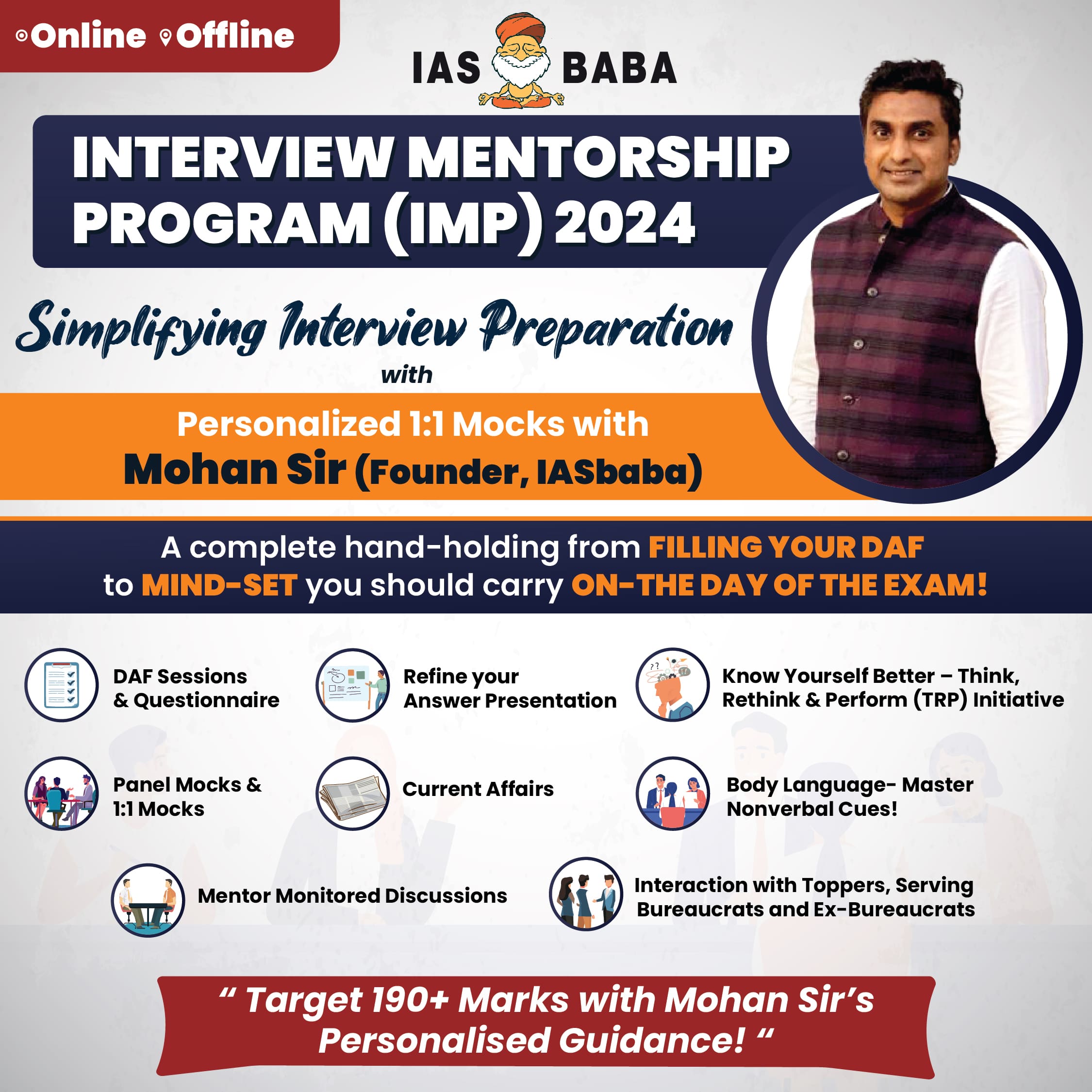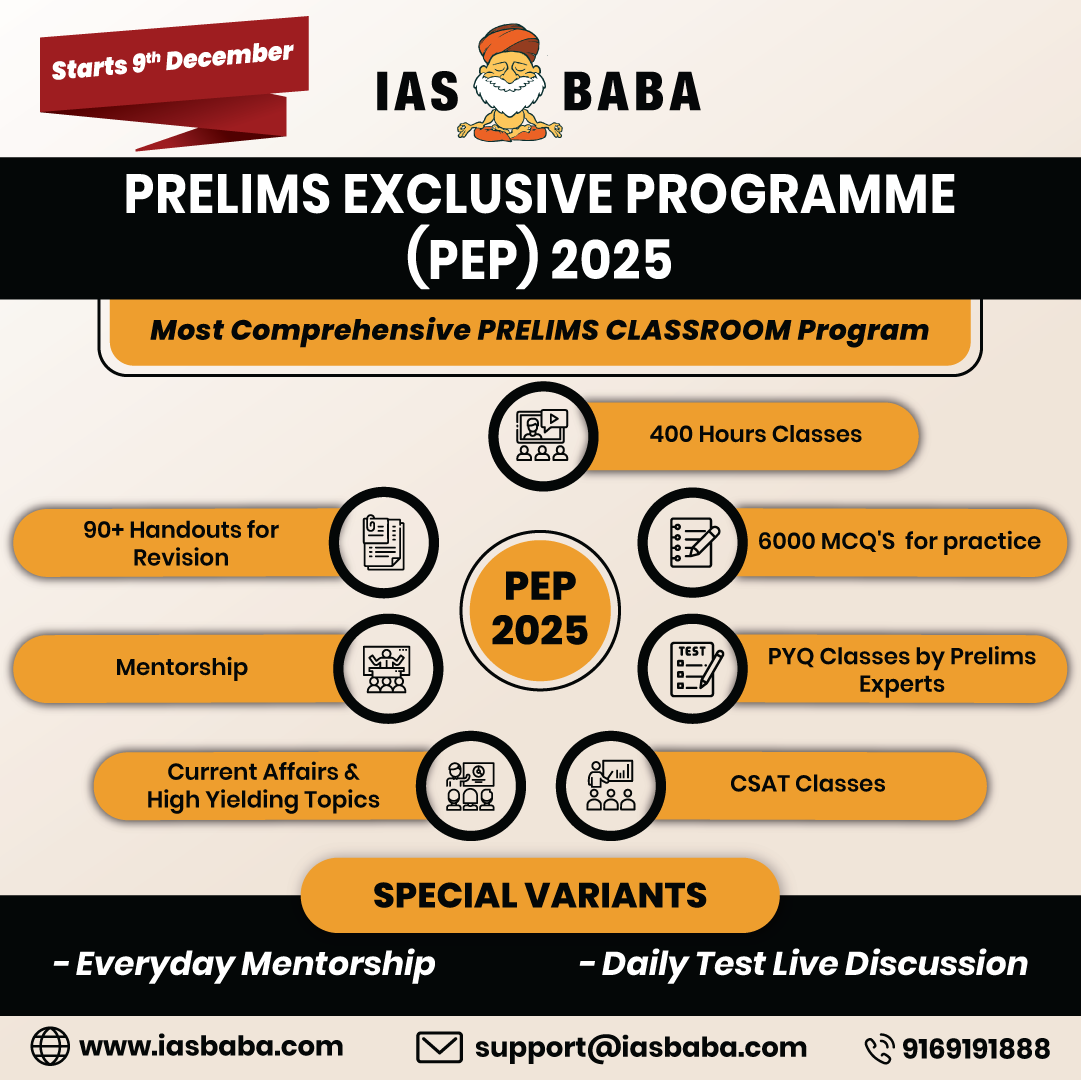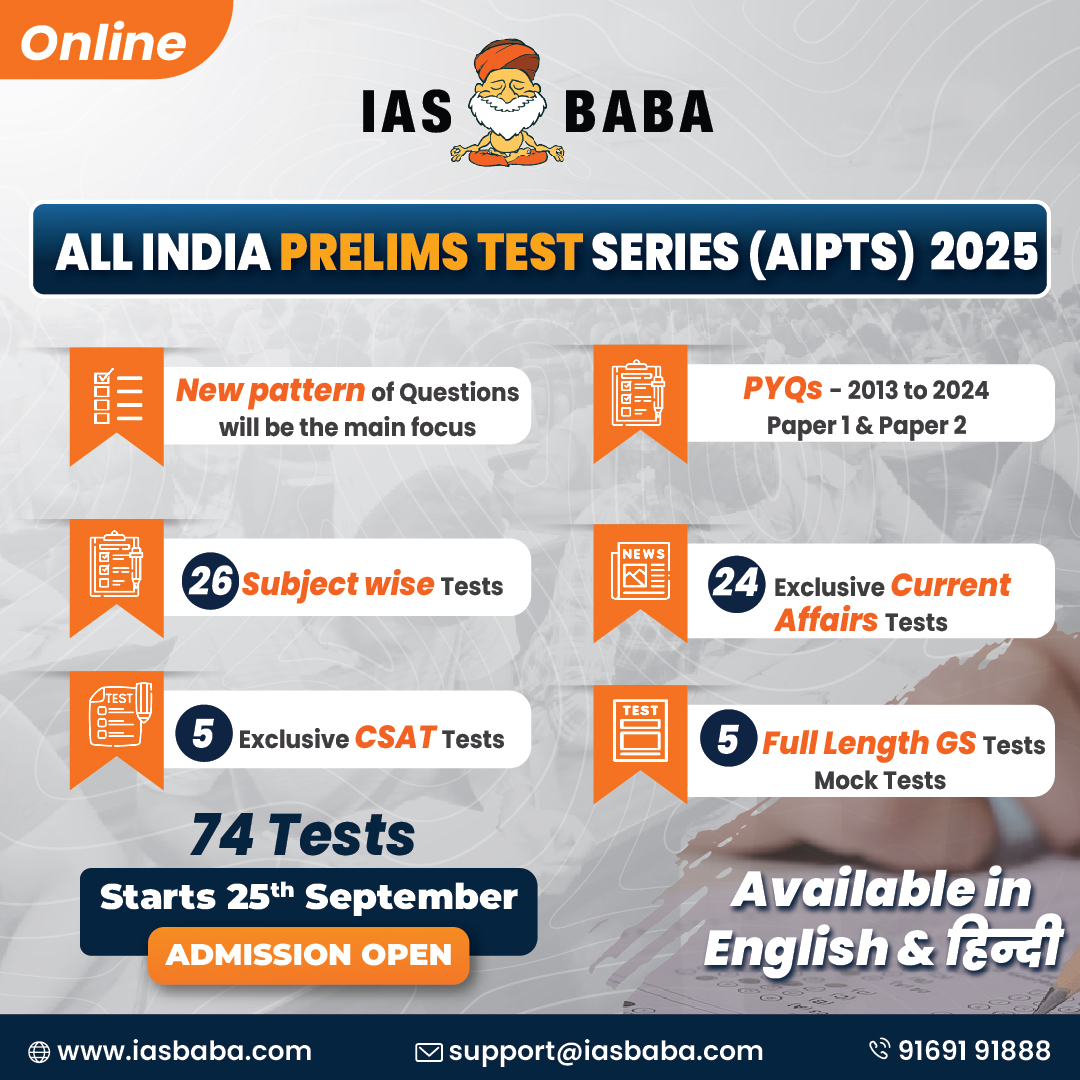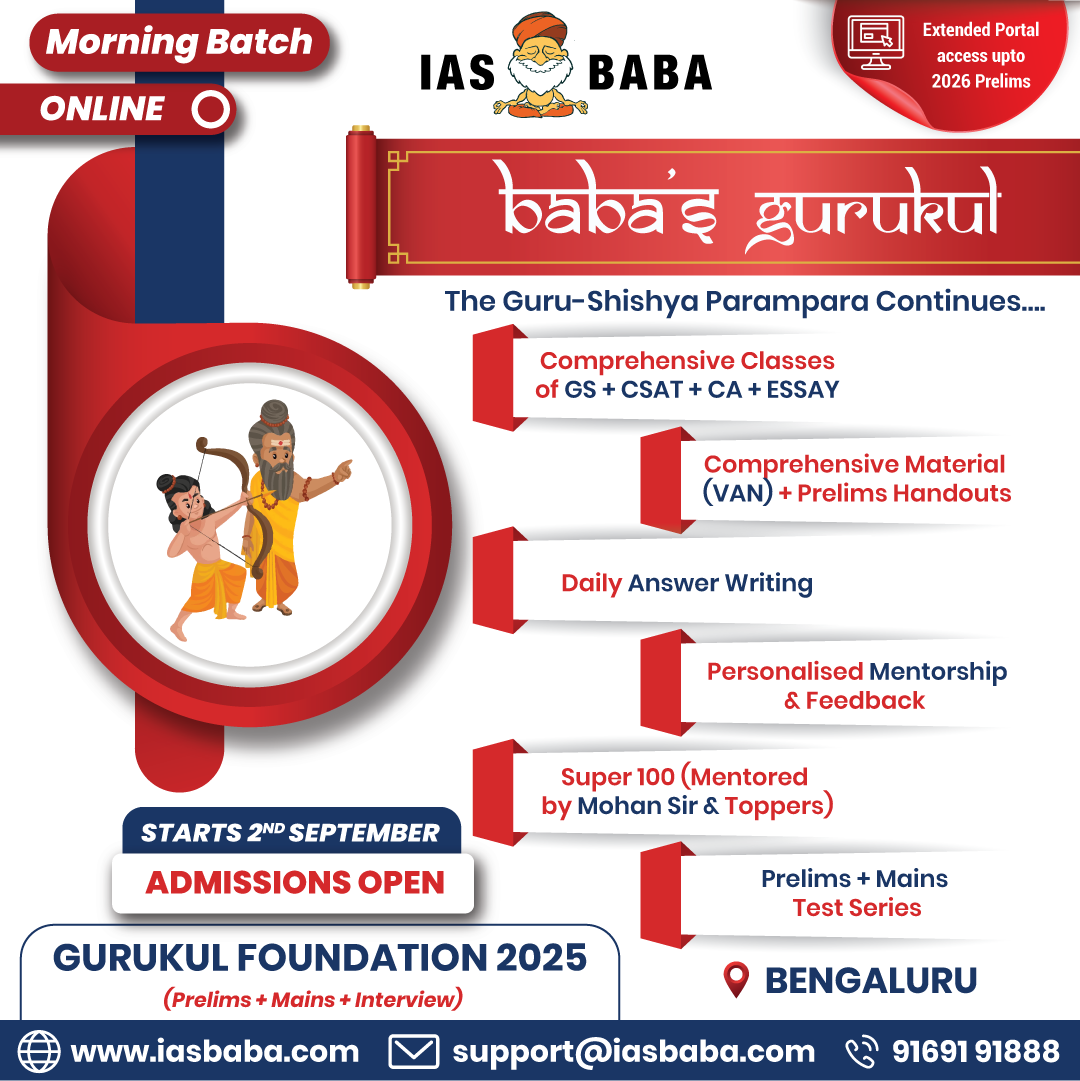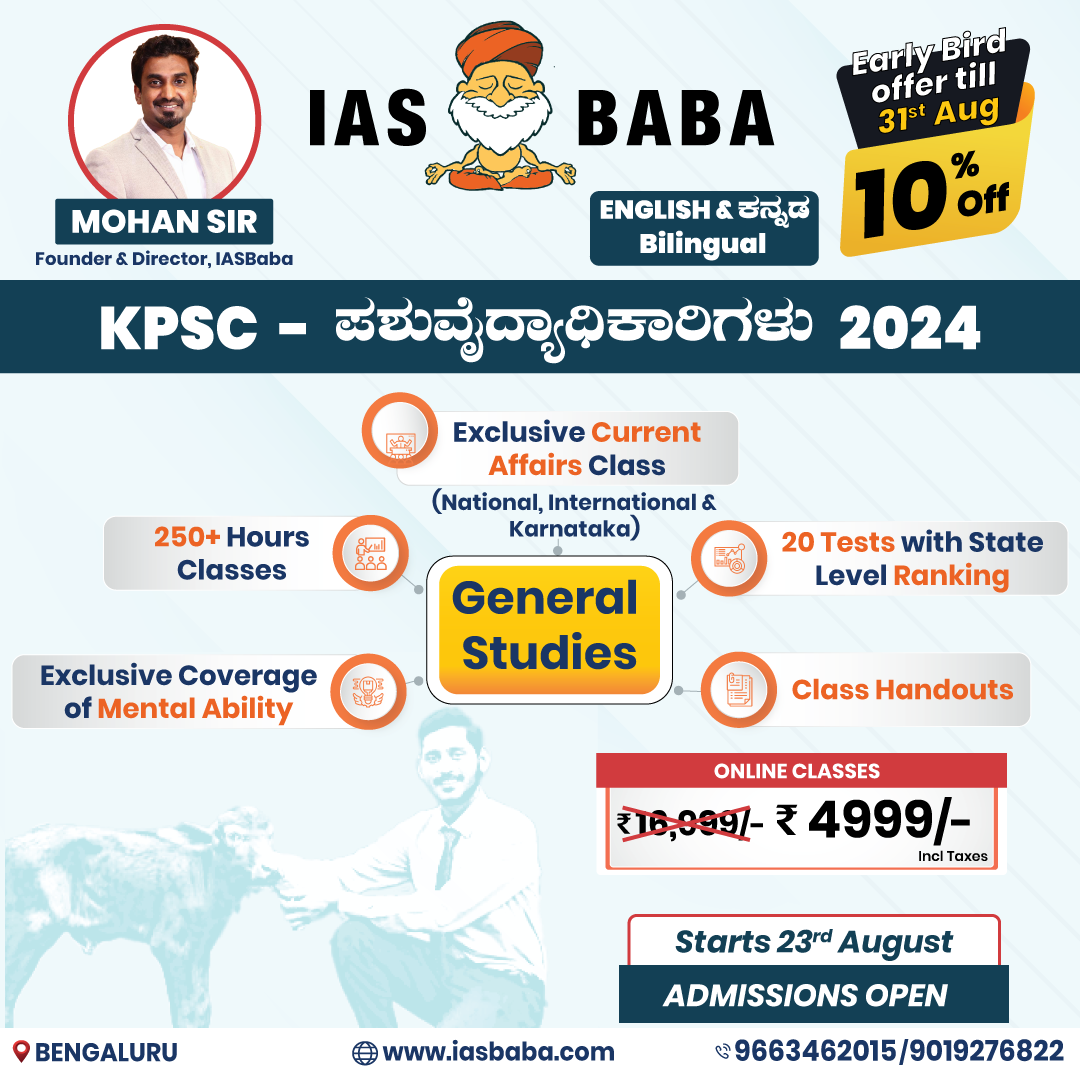IASbaba's Daily Current Affairs Analysis
Archives
(PRELIMS + MAINS FOCUS)
12th P-8I aircraft from Boeing
Part of: Prelims and GS-III Defence and security
Context: Aircraft manufacturer Boeing has delivered the 12th P-8I long-range maritime patrol aircraft to the Indian Navy. This completes the follow-on clause for four additional P-8I aircraft contracted in 2016.
- In May 2021, the U.S. State Department approved the possible sale of six additional P-8I aircraft and related equipment, a deal estimated to cost $2.42 billion.
- the six P-8Is will come installed with encrypted communication systems since India has now signed the foundational agreement Communications Compatibility and Security Agreement (COMCASA) with the U.S.
About P-8I
- The P-8s (Poseidon-Eight) Indian variant is referred to as P-8I.
- The aircraft plays a crucial role in being the eyes of the Indian Navy and carrying out critical maritime operations.
- It gives India’s maritime warriors a significant edge in the strategically important Indian Ocean region.
- The P-8I is responsible for:
- coastal patrolling
- search-and-rescue,
- anti-piracy,
- supporting operations of other arms of the military.
News Source: TH
Bloatware Apps
Part of: Prelims and GS-III Science & Technology
Context: Bloatware apps are being criticized for taking up the storage of the device unnecessarily and affecting the system’s battery life and overall performance.
Key takeaways
- Potentially Unwanted Programs (PUP), more popularly known as bloatware apps are needless programs that take a toll on your device’s performance.
- Device manufacturers introduced these bloatware apps to provide users with additional programs that they might want to use, while making money on the way.
- Gradually, these apps, rather than being helpful, end up being a headache for users.
- Generally, these apps that run in the background are hidden and locating them becomes a tough job for the users.
- It could be any software on your computer, phone or tablet that consumes a lot of resources like — memory, storage and battery life.
Different types of bloatwares found on devices
- There are three most common types of bloatwares that can be found on any device.
- Utilities: These types of bloatwares come from manufacturers and third-party developers and are usually pre-loaded on your device.
- These offer added functionality to your device.
- Trialware: Users can experience the app as most of them offer free trial modes in new devices.
- However, these programs keep on consuming your device’s resources, even after the trial period is over.
- Adware: These types of bloatware typically gets downloaded while downloading softwares from the internet.
News Source: TOI
Wireless Charging
Part of: Prelims and GS-III Science & Technology
Context: The convenience of wireless charging is rapidly making this tech a popular trend.
Working
- Modern smartphones use electromagnetic induction to transfer electric energy from the charger to the smartphone while wirelessly charging it.
- You need your smartphone to support wireless charging and a compatible wireless charger to use this tech. Both the phone and the charger need copper coils as well.
- A fast changing magnetic field interacts with the copper coil present inside the smartphone when you put a compatible smartphone on a wireless charger
- The magnetic field then produces electric energy in an enclosed loop that interacts with that magnetic field using electromagnetic induction. The battery gets charged by the electric current that is produced.
- This form of wireless charging is called tightly-coupled electromagnetic inductive charging.
- Two copper coils need to be placed in close proximity for this technology to function. The copper coils need to align for this type of wireless charging to work.
- There are other forms of wireless charging technologies that aim to solve this proximity issue.
- Radio Frequency (RF)-based charging can charge gadgets wirelessly at a few feet distance, whereas loosely-coupled resonance charging can deliver a charge up to a few centimetres away.
- Users will be able to charge their phones without going near a charger in the near future using RF charging.
News Source: TOI
(News from PIB)
Sustainable Cities India program
Part of: Prelims and Mains GS-2: Government schemes and policies
By: World Economic Forum and the National Institute of Urban Affairs
Aim: To create an enabling environment for cities to generate decarbonization solutions across the energy, transport, and the built environment sectors.
- The ‘Sustainable Cities India program’ intends to enable cities to decarbonize in a systematic and sustainable way that will reduce emissions and deliver resilient and equitable urban ecosystems.
- The Forum and NIUA will adapt the Forum’s City Sprint process and Toolbox of Solutions for decarbonization in the context of five to seven Indian cities across two years.
- The City Sprint process is a series of multi-sectoral, multi-stakeholder workshops involving business, government, and civil society leaders to enable decarbonization, especially through clean electrification and circularity.
- The outcome of the workshop series will be a shortlist of relevant policies and business models, which not only reduce emissions but also maximize System Value, such as improved air quality or job creation.
- Will help to jumpstart and/or accelerate net zero planning and action.
- Uses the Toolbox of Solutions – a digital platform containing over 200 examples of clean electrification, efficiency and smart infrastructure best practices and case studies across buildings, energy systems and mobility from over 110 cities around the world.
- Enable cities to run pilot solutions and, based on findings, India will be able contribute 10 to 40 best practice case studies which will be integrated into the Toolbox of Solutions and showcased across the world.
Significance
- India is rapidly urbanizing; its scale and pace is unprecedented. It is imperative for institutions to prioritize and embed climate resilience in the urban development process.
- As per the World Economic Forum’s Global Risks Report 2022, densely populated countries that are highly dependent on agriculture, such as India, are especially vulnerable to climate insecurity. Decarbonization in cities is a real opportunity to keep global warming well below 2°C and cities in India can make an enormous contribution in reaching this goal.
- India is committed to become Net Zero by 2070, aligning with its vision for a ‘future ready’ India set during the COP26 summit in Glasgow.
- New models of public and private collaboration are needed to make progress towards net zero goals.
- In realizing this vision to accelerate the clean energy transition, conversation and more importantly, action amongst all actors of the quadruple helix is critical. Cross-sector and inter-organizational partnerships are crucial to foster an exchange of knowledge and identify best practices which can be applied effectively in the Indian context.
- This partnership between NIUA and WEF is an important step towards that direction. This collaboration will help cities in India and cities globally to learn from one another and drive action towards sustainable development and climate resilience.
About Net Zero Carbon Cities: The World Economic Forum’s Net Zero Carbon Cities’ mission is to create an enabling environment for clean electrification and circularity, resulting in urban decarbonization and resilience. The program aims to do this by fostering public-private collaboration to bridge the gap across the energy, built environment and transport sectors.
About NIUA: Established in 1976, the National Institute of Urban Affairs (NIUA) is India’s leading national think tank on urban planning and development. As a hub for the generation and dissemination of cutting-edge research in the urban sector, NIUA seeks to provide innovative solutions to address the challenges of a fast urbanizing India, and pave the way for more inclusive and sustainable cities of the future.
News Source: PIB
Indian temple architecture ‘Devayatanam’
Part of: Prelims and Mains GS-1: Indian culture
Temple has always been an integral part of the Indian life and its ecosystem in its own ways. Temple construction was practiced as a pious act not only in the subcontinent but the idea also travelled to the nearest neighborhood such as south-east and East Asia; therefore, it becomes an interesting study as to how the art and technique of temple architecture spread from India to other regions and how this art was modified.
The architectural principles of temples in India are described in Shilpa Shastra –
- Nagara style: The style of temple architecture that became popular in northern India is known as Nagara. Nagara style was developed regionally each region manifesting its own particular qualities.
- Dravida Style: Dravida style of temple architecture became popular in South India. Dravida style of temples was developed dynastically, however the major features of these temples remained common across the dynasties.
- Vesara Style: In the mid-seventh century, a distinct style of temple architecture grew in Karnataka region under the patronage of Chalukya rulers. The temples in this region follow a hybridised style which combines the features of both Nagara and Dravida styles.
Similarities and differences of three styles:
| Nagara | Dravida | Vesara |
| Northern region | Southern region | Deccan region(Between the Vindhyas and Krishna river) |
| Developed regionally each region manifesting its own particular qualities | Developed dynastically | Mixture of two styles Hybrid style. It was developed both regionally and dynastically. |
| Ground Plan: Mostly Square shaped | Ground Plan: Mostly Square shaped | Ground Plan: increasingly complex, including start like plan |
| Curvilinear tower (Shikhara built over garbhagriha) gradually curving inward | Pyramidical Tower (Vimana) with several stories in receding dimension | The shape of tower was Pyramidical but height was reduced (Miniature Vimanas) |
| Multiple Shikharas | Subsidiary shrines are either incorporated within the main temple tower, or located as distinct, separate small shrines beside the main temple. | Multiple shrines are present side by side |
| Squared hall | Squared hall | Squared hall |
| Sanctum Garbhagriha | Sanctum Garbhagriha | Sanctum Garbhagriha |
| Gopurams are absent | Gopurams are present | Gopurams may or may not be present |
| A water tank may or may not be present | A water tank is present at the front of temple from where water is drawn for sacred purposes | A water tank may or may not be present |
| Compound walls are absent | enclosed within a compound wall | Compound walls may or may not be present |
| Examples – Dashavatara temple (Deogarh), Vishwanatha temple(Khajuraho), Lakshman Temple (Khajuraho), Jagannath temple (Puri) | Examples – Shore temple (Mahabalipuram), Brihadiswara temple (Thanjavur), Meenakshi Temple (Madurai) | Examples – Badami temple, Durga Temple (Aihole), Virupaksh Temple (Pattadkal), Keshava Temple (Somnathpur |
Must Read: Link 1 + Link 2 + Link 3
MISCELLANEOUS
Nocte tribes: Arunachal Pradesh
National War Memorial (NWM): Stands testimony to the sacrifices made by the gallant soldiers since Independence. The monument houses the eternal flame which exemplifies the supreme sacrifice made by a soldier in the line of duty thus making him immortal.
System for Pension Administration (Raksha) {SPARSH} initiative:
- Aims at providing a comprehensive solution to the administration of pension to the defence pensioners in line with the Government’s vision of ‘Digital India’, ‘Direct Benefit Transfer (DBT)’ and ‘Minimum Government, Maximum Governance’.
- Designed keeping defence pensioners at the centre, who will be given a completely transparent view of their pension account, through an online portal
- It captures and maintains a complete history of events and entitlements of the pensioner – right from the date of commencement of pension to the date of cessation of pension due to the last eligible beneficiary.
- SPARSH has fundamentally re-engineered the process of pension disbursement – from generation of the Pension Payment Orders (PPOs) to Direct Benefit Transfer of pensions, with the motto of right pension delivered at the right time.
Climate change likely to favor soil-borne plant pathogens for diseases
- Indian Scientists have identified that high-temperature drought conditions and low soil moisture content are favorable conditions for dry root rot (DRR)
- DRR is a disease that damages the roots or girdles the trunk in chickpea. This work will be useful for the development of resistant lines and better management strategies.
- Dry root rot disease causes reduced vigour, dull green leaf colour, poor new growth, and twig dieback. If extensive root damage occurs, the leaves suddenly wilt and dry on the tree.
Significance of the study
- The increasing global average temperature is leading to appearance of many new plant disease-causing pathogens at a rate hitherto unheard of, one of them being Macrophomina phaseolina, a soil-borne necrotrophic that causes root rot in chickpea.
- Currently, the central and southern states of India have been identified as the prime chickpea DRR hotspots with an overall 5 – 35% disease incidence.
(Mains Focus)
GOVERNANCE/ ECONOMY
- GS-2: Government policies and interventions for development in various sectors and issues arising out of their design and implementation.
- GS-3: Agriculture
Ploughing a new channel for India’s food systems
Context: In an effort to spur national and regional action to deliver the United Nation’s 17 Sustainable Development Goals (SDGs) through transforming food systems, the UN Food Systems Summit called for action by governments in five areas:
- nourish all people
- boost nature-based solutions
- advance equitable livelihoods, decent work and empowered communities
- build resilience to vulnerabilities, shocks and stresses
- accelerate the means of implementation.
Such a transformation in the Indian context would involve enhancing interfaces between the spheres of science, society and policy, focusing on sustainability, resource efficiency and circularity.
How mix of Policy & Science led to success of Green Revolution?
- India’s Green Revolution in the 1960s, was achieved not only through the development of improved high-yielding varieties of rice and wheat but also through policy measures and development of institutional structure.
- It included a vast agricultural research and technology transfer system at the national, regional, State and local levels.
- The Training & Visit (T&V) system introduced in the 1970s with World Bank assistance was key to the science-society interface as it established a cadre of agriculture extension specialists at the local level.
- The necessary behavioural changes in adopting the improved seeds and practices brought about by the T&V system in the 1960s enabled science to steer the process of change.
Why India needs a second Green Revolution?
- Although India is now self-sufficient in food grains production in the macro sense, it has about a quarter of the world’s food insecure people
- Macro- and micronutrient malnutrition is widespread, with 18.7% of women and 16.2% of men unable to access enough food to meet basic nutritional needs, and over 32% of children below five years still underweight.
- India is ranked 101 out of 116 countries in the Global Hunger Index, 2021.
- The country faces the dual challenge of achieving nutrition security, as well as addressing declining land productivity, land degradation and loss of ecological services with change in land use.
- Therefore, in the context of widespread concerns about poverty and malnutrition there is the need for a second Green Revolution.
What should be the approach for agriculture going forward?
- The siloed approach of ‘agriculture’ serving ‘food security’ needs must give way to ‘food systems’ for ‘sustainability’ and ‘better nutrition.
- Agriculture as a sector should embrace the range of activities and actors involved in food production, aggregation, processing, distribution and consumption embedded in their socio-economic and physical context.
- A theory of change ought to bring the focus back on sustainability, resource efficiency and circularity as the central pillars towards transforming food systems.
- An agro-climatic approach to agricultural development is important for sustainability and better nutrition.
- It is assumed that a meticulous review of agro-climatic zones could make smallholders farming a profitable business, enhancing agricultural efficiency and socio-economic development, as well as sustainability.
- Crop diversification and precision for enhanced crop productivity based on soil type, climate (temperature and rainfall), and captive water resources.
- The focus should be on improving farmers’ competitiveness, supporting business growth in the rural economy, and incentivising farmers to improve the environment.
- A stress status of the natural resource base — soil and water in different agro-climatic zones — will help understand the micro as well as meso-level interventions needed with regard to technologies, extension activities and policies.
- Lastly, infrastructure and institutions supporting producers, agri-preneurs and agri micro, small and medium enterprises (MSMEs) in their production value chain are central to the transition.
Connecting the dots:
- IDEA – ‘India Digital Ecosystem for Agriculture’
- New Farm Acts and opposition to it
- How has agri-marketing policy changed over years
INTERNATIONAL/ SECURITY
- GS-2: Effect of policies and politics of developed and developing countries on India’s interests.
Shaking up Europe’s security architecture
Context: The commencement of Russian military action in Ukraine is having huge implication on the global security order. At the heart of it is the instability in the post-Cold War security order.
What events led to emboldening of Russia?
- Reengagement between US & Russia: A meeting between U.S. President Biden and Russia’s President Vladmir Putin in June 2021 wanted to reverse seven years of relentless U.S.-Russia acrimony.
- Growing US-China tensions: US was seeking a modus vivendi with Russia and disengagement from conflicts in Europe and West Asia, to enable a sharper U.S. focus on domestic challenges and the external challenge from its principal strategic adversary, China.
- Space for Russia: Mr. Putin saw this reengagement as an opportunity to revive Russia’s flagging economy and expand its freedom of political action globally. However, he wanted this engagement on equal terms where Russia’s concerns are met, so that it does not constantly worry about strategic posture of NATO.
What were Russia’s concerns with West?
- Russia has repeatedly articulated its grievances:
- NATO’s expansion violated promises made prior to the breakup of the Soviet Union
- Ukraine’s accession to NATO would cross Russia’s red lines
- NATO’s strategic posture poses a continuing security threat to Russia
- NATO’s expansion as a politico-military alliance, even after the dissolution of the Soviet Union and the Warsaw Pact, was at the U.S.’s initiative.
- It was intended to temper European ambitions for strategic autonomy from the sole superpower and to counter Russia’s resurgence.
How has the nature of NATO changed in the post Cold-war era?
- NATO countries today span a geography of uneven economic development and a diversity of political traditions and historical consciousness.
- Moreover, the original glue that held NATO together — ideological solidarity (free world against communist expansion) and an existential military threat — dissolved with the collapse of communism and the Warsaw Pact. There is no ideology to oppose now.
- Threat perceptions for NATO varies, depending on geographical location and historical experience. This heterogeneity means a diversity of interests.
- American leadership has normally succeeded in papering over differences, but the growing ambitions of countries is making this increasingly difficult.
Did US actions eventually led to the present crisis?
- US pressure on NATO in 2008 to recognise Ukraine’s membership aspirations and its encouragement for a change of government in Ukraine in 2014, provoked the Russian annexation of Crimea.
- The subsequent armed separatist movement in eastern Ukraine (Donbas) led to the Minsk accords of 2014-15, which provided for a special status for this region within Ukraine.
- Ukraine considers this an unfair outcome, and the U.S. has supported its efforts to reinterpret the accords to its advantage.
- In recent months, the U.S. signalled that it would support the full implementation of the Minsk accords, but apparently found it difficult to shake the entrenched interests sufficiently to make it happen.
- This may have finally convinced Mr. Putin that his concerns would not be met through negotiations.
- U.S. interests have also divided NATO on energy security.
- For Germany, the Nord Stream 2 (NS2) Russia-Germany gas pipeline is the cheapest source of gas for its industry.
- US deem it a geopolitical project, increasing European dependence on Russian energy. US also has commercial interest in exporting LNG to Europe.
- Ukraine fears the diminution of gas transit revenues, and also that if its importance for gas transit declines, so will Europe’s support in its disputes with Russia.
- European countries that oppose NS2 are ramping up their LNG import infrastructure to increase imports from the U.S.
What does the future hold?
- The manner in which NATO countries implement the promised harsh sanctions against Russia will demonstrate whether, how much and for how long, this crisis will keep them united.
- European order that does not accommodate Russia’s concerns through genuine negotiation cannot be stable in the long term.
- France’s President Emmanuel Macron has been making this point forcefully, arguing for Europe to regain its strategic autonomy.
- He has called NATO “brain-dead” and said that Europe, as a “geopolitical power” should control its own destiny, regaining “military sovereignty” and re-opening a dialogue with Russia.
What is the outlook for India?
- India will have to balance the pressure from one strategic partner to condemn the violation of international law, with that from another to understand its legitimate concerns.(Just like what India did in 2014)
- As Russia-West confrontation sharpens further, the U.S. Administration’s intensified engagement in Europe will inevitably dilute its focus on the Indo-Pacific, causing India to make some tactical calibration of actions in its neighbourhood.
Conclusions
- Geopolitics, however, is a long game, and the larger context of the U.S.-China rivalry could, at some point in the not too distant future, reopen the question of how Russia fits into the European security order.
Connecting the dots:
(TEST YOUR KNOWLEDGE)
Model questions: (You can now post your answers in comment section)
Q.1 Consider the following statements:
- Radio Frequency (RF)-based charging can charge gadgets wirelessly at a few feet distance, whereas loosely-coupled resonance charging can deliver a charge up to a few centimetres away.
- In wireless charging, Both the phone and the charger need copper coils for charging.
Which of the above is or are correct?
- 1 only
- 2 only
- Both 1 and 2
- Neither 1 nor 2
Q.2 The P-8I is responsible for?
- coastal patrolling
- search-and-rescue
- anti-piracy
- All of the above
Q.3 Net Zero Carbon Cities’ mission is launched by which of the following count?
- World Economic Forum
- World Health Organisation
- United Nations Security Council
- World Bank
ANSWERS FOR 25th Feb 2022 TEST YOUR KNOWLEDGE (TYK)
| 1 | C |
| 2 | D |
| 3 | A |
Must Read
On Budget and Green ambitions:
On economy creating jobs:



